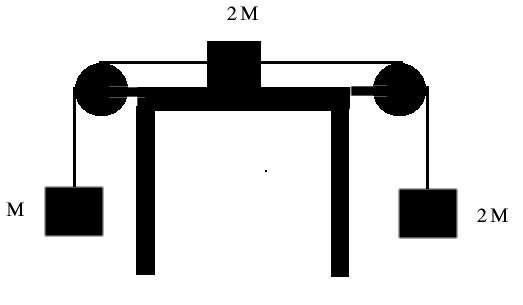
36.
43.
70.
IX.
Place a force of WL = Mg acting down on the mass at the
left, a force WR = 2Mg acting down on the right, and since
the heavier mass will accelerate downward, a frictional force
Ff acting leftward on the middle mass.
X. The force of friction, given
mus = 0.02 and N = 75 kg * g = 735 Newtons can be
as high as 14.7 Newtons. Since this number exceeds the applied
force of 1 Newton, the skier does not accelerate.
XI.
At any given place on the ramp the forces and geometry are:
Note that tan(theta) = dy/dx since the surface is really curved.
I have shown only the tangent line in drawing the local geometry.
Using forces:
y : N cos(theta) - mg = 0
x : N sin(theta) = mv2 /x
The velocity is given by v = 2 pi x / T
and theta is given by tan(theta) = dy/dx
We can eliminate the unknown N by dividing the second equation by
the first; in the process we happily eliminate m as well:
tan(theta) = v2 /(gx)
Eliminating v in favor of T with the last equation [we want to do
this since T is a known constant and v is not known or wanted]:
It is surprisingly easy to turn this into y(x):
dy/dx = A x
with
A = 4 pi2 /( gT2 ).
Integrating both sides with respect to x,
y + C = A integral ( x dx ) = A x2 / 2
so
y = 2 pi2 x2 / (gT2 ) - C
for any value of C .








Known: T, x, g
To find: y(x), or at least tan(theta) = dy/dx
Unknown and unwanted: N, m
Supposedly irrelevant: v
tan(theta) = 4 pi2 x /( gT2 )




